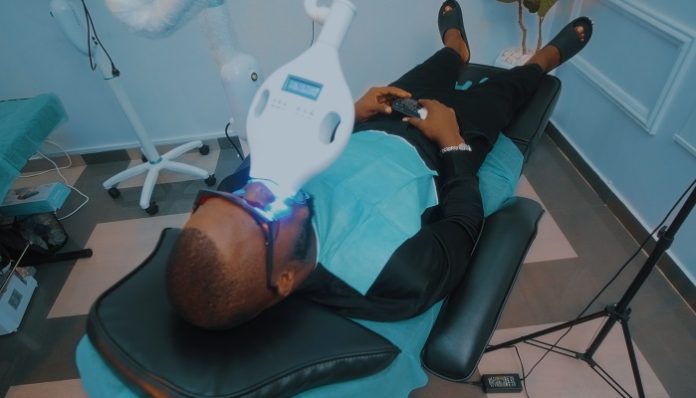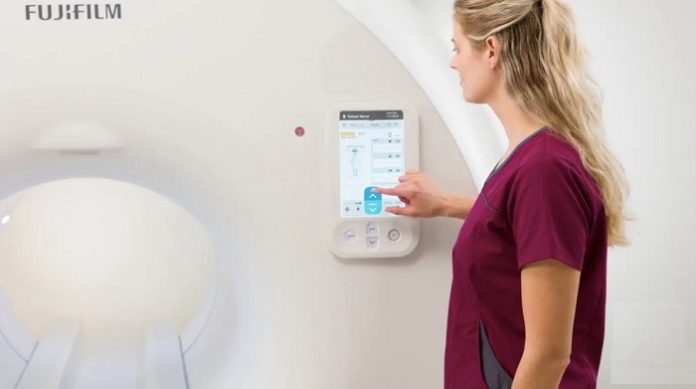Mesotherapy, a revolutionary cosmetic procedure gaining increasing popularity, is a technique that involves the injection of a specialized cocktail of medications, vitamins, and enzymes directly into the middle layer of the skin. This non-surgical treatment targets skin rejuvenation, weight loss, and hair restoration. Understanding the costs, expectations, procedure, recovery, and more about Mesotherapy is essential before deciding whether it’s the right option for you.
This article will explore Mesotherapy, its origins, the procedure itself, recovery expectations, associated costs, and its benefits. So, let’s unearth the captivating history and origin of this innovative technique that has revolutionized the approach to aesthetic enhancements.
Definition And Core Concept
Mesotherapy primarily focuses on stimulating cell metabolism and enhancing tissue repair by delivering active substances directly into the target area. The injection technique ensures effective absorption and distribution of the solution, promoting localized therapeutic effects.
Costs Of Mesotherapy
The cost of Mesotherapy can vary depending on several factors. It is important to understand these factors to get an accurate idea of the potential costs involved. Let’s explore the factors influencing the cost of Mesotherapy:
Factors Influencing Cost
Geographic Location: The cost of Mesotherapy can vary based on the geographic location of the clinic or healthcare facility. Generally, areas with higher living costs and higher demand for cosmetic procedures tend to have higher prices.
Clinic’s Reputation and Practitioner’s Expertise: The reputation and expertise of the practitioner performing the Mesotherapy can affect the cost. Experienced and well-known practitioners in reputable clinics may charge higher fees due to their skill and reputation.
Complexity and Number of Areas Being Treated: The complexity of the treatment and the number of areas being treated can impact the overall cost. Treating larger areas or addressing multiple concerns may require more time and resources, increasing the price.
Price Range Based On Different Treatments
The cost of Mesotherapy can vary significantly depending on the specific treatment being performed. Here is a general price range based on different treatments:
Facial Mesotherapy: Prices typically range from USD$200 to USD$600 per session.
Body Mesotherapy (cellulite reduction): Prices usually range from USD$250 to USD$800 per session.
It’s important to note that multiple sessions may be needed to achieve the desired results, and the total cost will depend on the number of sessions required.
Realistic Expectations
It is important to have realistic expectations when considering Mesotherapy as a treatment option. Mesotherapy can offer several benefits, including skin rejuvenation, hair restoration, and fat reduction. Let’s discuss what results to expect based on different treatments, the duration of visible results, and the possible need for follow-up sessions.
What Results To Expect Based On Different Treatments
Skin Rejuvenation: Mesotherapy can rejuvenate the skin by providing essential nutrients, vitamins, and antioxidants, improving the overall appearance and quality. Patients may notice reduced fine lines and wrinkles, improved skin texture and tone, and increased hydration.
Hair Restoration: Mesotherapy can stimulate hair growth by injecting nutrient-rich solutions into the scalp, which promotes hair growth and increases blood flow to the follicles. Patients may notice an improvement in hair density, thickness, and quality.
Fat Reduction: Mesotherapy can target stubborn pockets of fat resistant to diet and exercise regimens. The procedure involves injecting a solution that dissolves fat cells, which are then naturally eliminated by the body.
The Mesotherapy Procedure
Mesotherapy is a specialized cosmetic treatment that involves a series of microinjections into the mesodermal layer of the skin. Let’s take a closer look at each step involved in the procedure:
Initial Consultation: What To Expect
Before undergoing Mesotherapy, it is best to have an initial consultation with a qualified aesthetic practitioner or healthcare professional. The practitioner will examine your specific concerns, goals, and medical history during this consultation. They will explain the procedure in detail, discuss your expectations, and determine if you are a suitable candidate for Mesotherapy.
Pre-Procedure Preparations
If Mesotherapy is deemed appropriate for you, the practitioner will provide pre-procedure instructions. This might include avoiding blood-thinning medications, certain supplements, and alcoholic beverages a few days before the treatment. You may also be advised to come to the procedure with clean, makeup-free skin.
Detailed Step-by-Step Of The Procedure
Cleansing the Area: Before beginning the injections, the treatment area will be cleansed thoroughly to remove dirt, oils, or impurities.
Applying Numbing Agent (If Required): Depending on the individual’s pain tolerance and the treatment area, a topical numbing cream or local anesthetic might be applied to minimize discomfort during the procedure. The practitioner will wait for the numbing agent to take effect before proceeding.
The Injection Process: The practitioner will administer a series of microinjections directly into the mesodermal layer using a fine-gauge needle or a specialized mesotherapy gun. The injections are typically shallow and placed at specific depths and angles to target the desired area effectively.
Post-Procedure Care
After the injections, the practitioner may provide specific aftercare instructions based on the individual’s needs. This may include:
- Avoiding touching or applying pressure to the treated area for a specified period.
- Refraining from excessive physical activity or exposure to direct sunlight for a few days.
- Using recommended topical products or following a skincare routine as the practitioner advises.
- Attending follow-up appointments, if necessary, to monitor progress and discuss any concerns.
It is crucial to follow the above instructions to minimize risks and ensure optimal results. While the recovery period may vary from person to person, understanding the general expectations is crucial.
Recovery
After undergoing Mesotherapy, it is important to understand what to expect during recovery, potential side effects, and signs of complications. Let’s delve into these aspects:
Common Post-Procedure Side Effects
Some common side effects that may occur after the Mesotherapy procedure include:
Mild swelling: The treated area may experience slight swelling for a few hours or days following the treatment. This is a normal reaction and typically subsides on its own.
Redness or bruising: Some individuals may experience mild redness or bruising at the injection sites. This is usually temporary and will fade over time.
Slight discomfort: It is possible to experience mild discomfort or tenderness in the treated area. This is usually well-tolerated and can be managed with over-the-counter pain relievers.

Duration Of Recovery Period
The recovery period for Mesotherapy is typically minimal. Most individuals can resume their normal activities immediately after the procedure. However, it is important to note that the recovery duration may vary depending on the individual, the treatment area, and the intensity of the treatment.
What To Avoid Post-Procedure
To ensure optimal healing and results, it is typically recommended to avoid the following post-procedure:
Sun exposure: Protect the treated area from direct sunlight and use sunscreen with a high SPF to prevent hyperpigmentation and protect the skin.
Harsh skincare products: Avoid using aggressive or harsh skincare products on the treated area for a few days.
Certain medications: It is advisable to consult with the healthcare professional or practitioner about any specific medications or supplements that should be avoided during the recovery period.
Signs Of Complications And When To Seek Medical Attention
While complications are rare, knowing the signs may indicate a problem is important. Contact your healthcare professional or seek medical attention if you experience:
- Excessive swelling, pain, or bruising that does not subside after several days.
- Signs of infection include increasing redness, warmth, or pus at the injection sites.
- Allergic reactions include severe itching, rash, hives, or difficulty breathing.
It is crucial to promptly address any concerns or complications to ensure appropriate management and optimal recovery.
Benefits Of Mesotherapy
Mesotherapy is gaining popularity as a versatile treatment option with numerous benefits. Let’s explore some of the key advantages it offers:
Mesotherapy can effectively improve the overall quality and appearance of the skin. The customized cocktail of ingredients injected stimulates collagen and elastin production, promoting skin firmness and elasticity. It can also help reduce wrinkles, fine lines, and age spots, giving the skin a rejuvenated and youthful glow.
A common concern for many individuals is unwanted pockets of fat and cellulite in specific areas of the body. Mesotherapy specifically targets these areas, breaking down fat cells and improving blood circulation, reducing localized fat and cellulite. This helps in achieving a smoother and more contoured body shape.
Mesotherapy has shown promising results in the treatment of hair loss and promotion of hair regrowth. Infusing the scalp with a specialized blend of vitamins and minerals revitalizes hair follicles, improves blood circulation, and strengthens the hair shaft. This can lead to thicker, healthier hair growth and reduced hair loss.
In addition to its cosmetic benefits, Mesotherapy has been used in pain management. Injecting a combination of analgesic and anti-inflammatory ingredients directly into affected areas can provide targeted relief from joint and muscle pain. This makes it a valuable treatment option for individuals with arthritis, sports injuries, or chronic pain.
Mesotherapy is promising in treating various conditions, such as reducing hyperpigmentation, improving vascular and lymphatic circulation, and promoting tissue regeneration. It is constantly being researched for potential applications in various medical fields.
Conclusion
Mesotherapy has shown promise in delivering positive outcomes for many patients. However, individual responses may vary, and expert opinion is valuable in assessing the effectiveness and value of this treatment. Consulting with reputable professionals, such as dermatologists or plastic surgeons, can provide personalized insights and recommendations for those considering Mesotherapy.




























